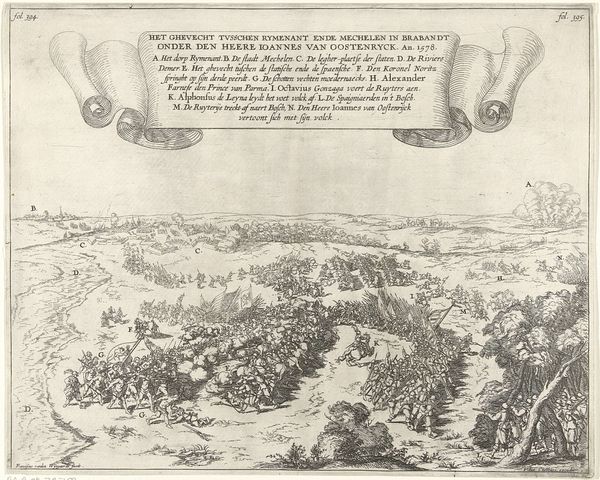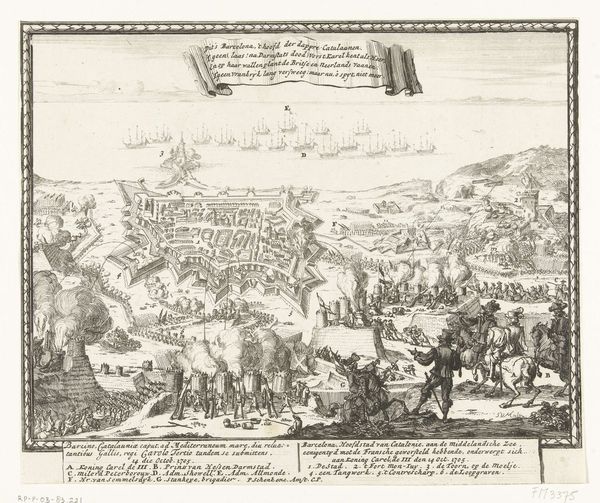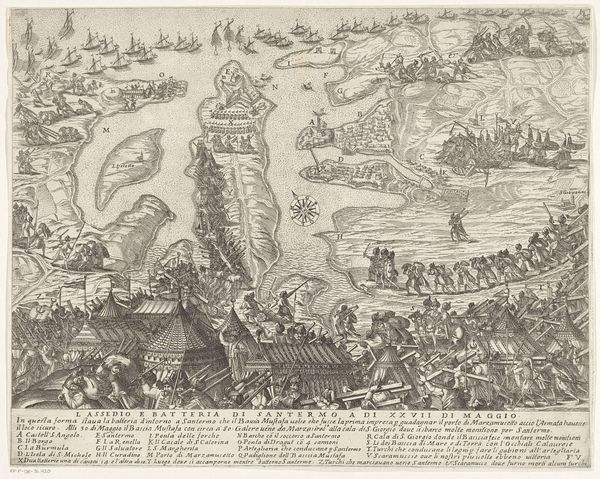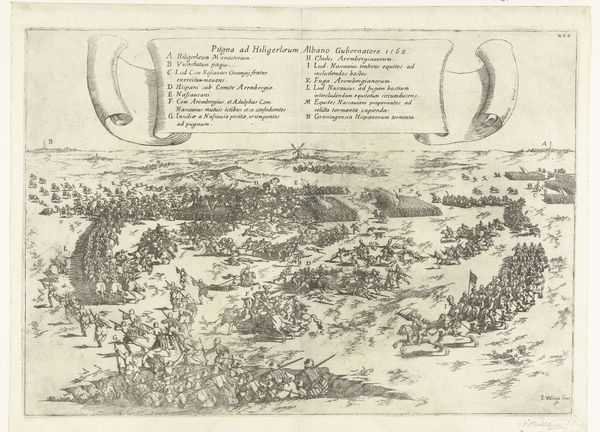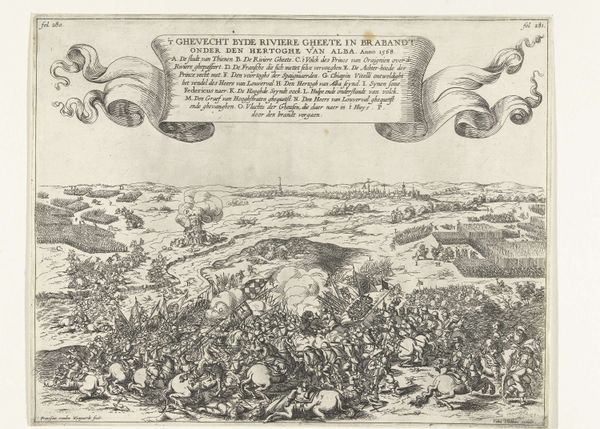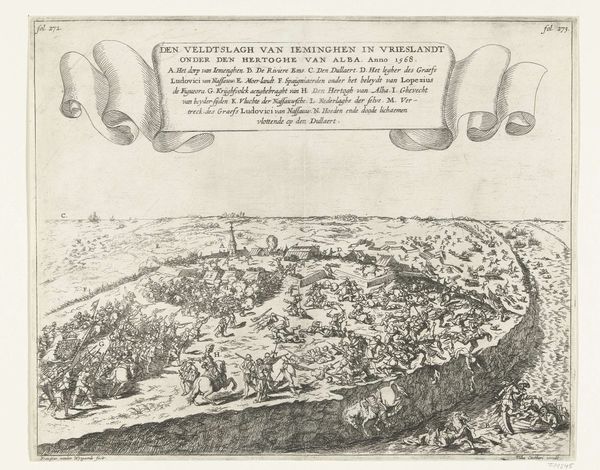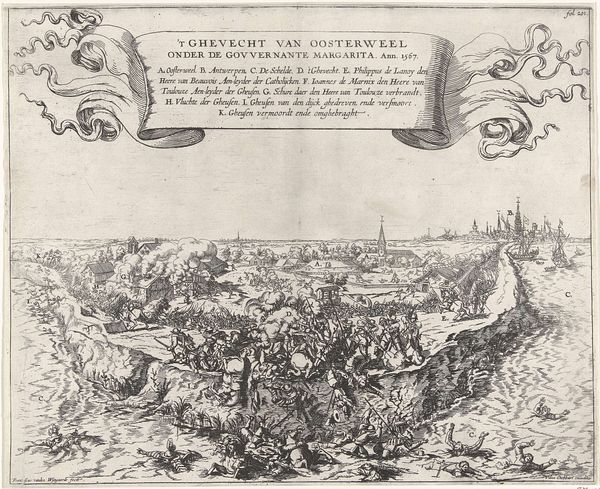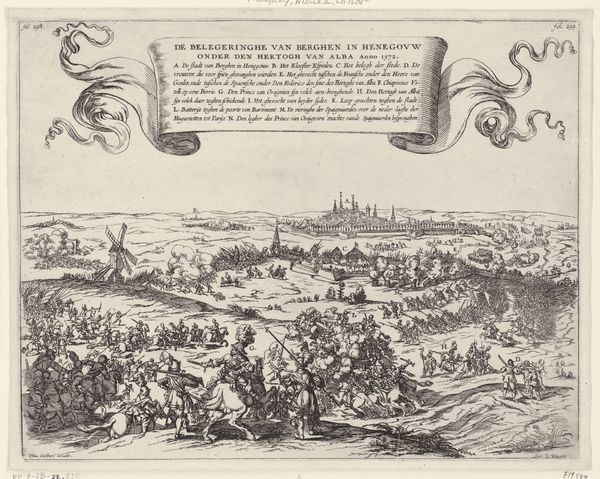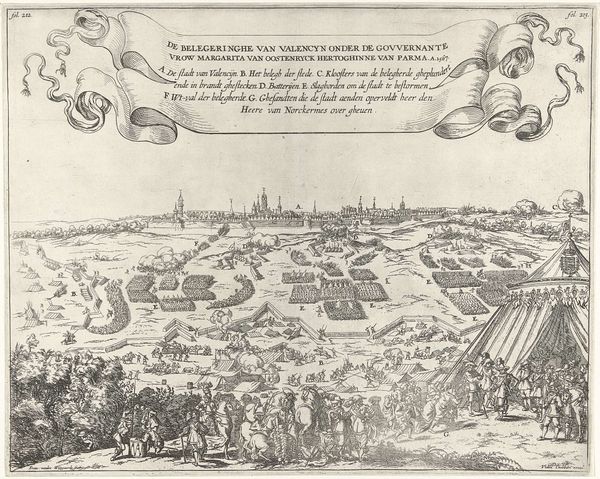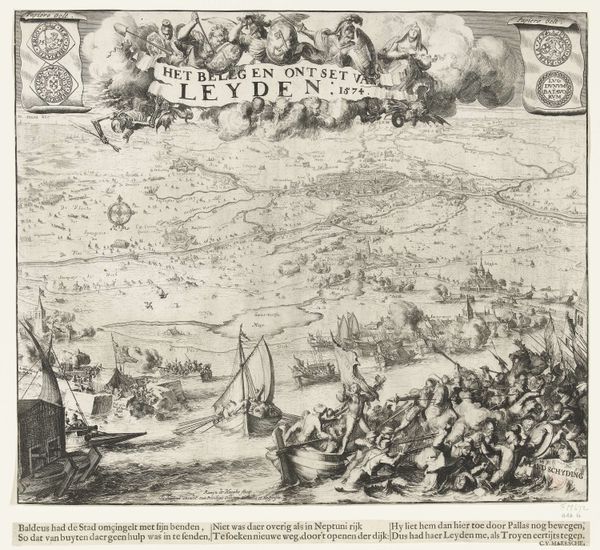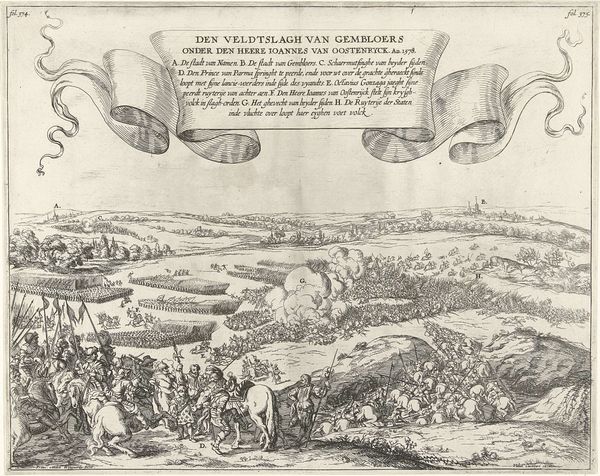
print, engraving
#
narrative-art
#
baroque
# print
#
old engraving style
#
landscape
#
figuration
#
history-painting
#
engraving
Dimensions: height 264 mm, width 324 mm
Copyright: Rijks Museum: Open Domain
Curator: Here we have Frans van den Wijngaerde's engraving, "Slag bij Heiligerlee, 1568," dating from around 1643 to 1645. Editor: It’s incredibly busy, isn't it? A whirlwind of tiny figures against a vast, flat landscape. The contrast is striking. It feels like a chaotic, overwhelming event rendered with almost detached precision. Curator: Well, engravings like this served a very specific purpose. They weren't just aesthetic objects. They documented events, in this case the Battle of Heiligerlee, but also circulated ideas about Dutch identity and the revolt against Spanish rule. Look at the textual key across the top, and notice that A, the Kloster van Heiligerlee and B the town Winschoten can also be spotted within the detailed scenery, effectively charting and reporting history as a new medium during the period of conflict with Spain. Editor: Absolutely, the print medium facilitated broader consumption and engagement with historical narratives, shaping public consciousness during this tumultuous time. You notice how the landscape, although somewhat flat, is still articulated with textures suggesting topography. This adds depth but keeps attention trained to the figures of conflict. It really directs attention on the social and martial forces meeting on the fields. Curator: It's interesting how the relatively inexpensive printmaking process made the depicted event much more widely "available" to public consumption. One could examine its compositional techniques, as the opposing lines of troops direct our eyes across the scene. However, its initial production as a portable and reproducible image—rather than as an expensive history painting on canvas only accessible to the upper classes—meant its images of the revolt would disseminate amongst a wide and diverse public, imprinting a national spirit in ways more traditionally-vetted, elite artwork couldn’t do. Editor: And thinking about semiotics, note the strategic placement of details like flags or even just dense groups, operating as key visual signifiers to guide the viewer through the narrative. Curator: Exactly. Consider how van den Wijngaerde used a readily available medium, accessible workshops, and printing press to create a powerful piece of political propaganda and nascent nationalistic sentiment. The labor itself speaks volumes, both its cost efficiency and broader social influence. Editor: It's fascinating how our distinct approaches reveal such complementary understandings of this piece. I looked at composition while you examined production. Curator: And together we can understand both the formal choices of its printmaker and also its production details, which point to both its context of origin and broader socio-cultural reach.
Comments
No comments
Be the first to comment and join the conversation on the ultimate creative platform.
